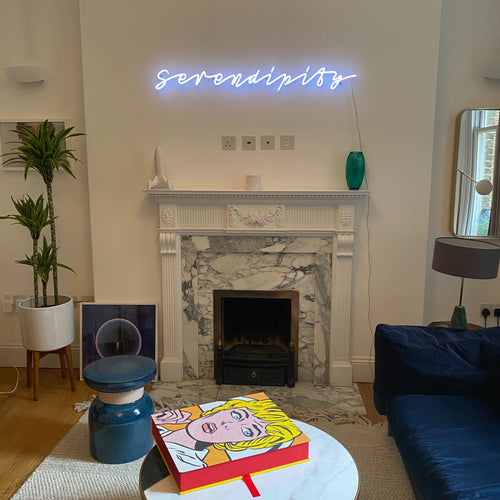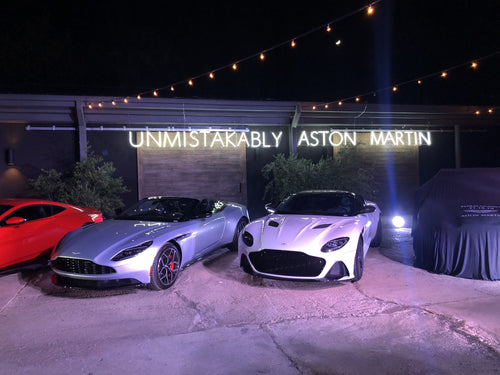In the fast-paced world of business and design, branding plays a crucial role in how companies communicate with their target audiences. One powerful tool for enhancing brand visibility and creating a memorable atmosphere is custom-made neon signs. With their unique ability to blend art, function, and personality, these signs have become a prominent feature in both commercial and residential spaces. But what exactly makes neon signs so impactful in modern branding and interior design? This question invites an exploration of the evolution, design considerations, and cultural relevance of custom-made neon signs. This response will address the significance of these vibrant illuminations in terms of branding, artistic expression, and interior decor.
1. The Evolution of Neon Signs
Neon signs have a storied history that stretches back to the early 20th century. Originally, neon lighting was introduced in the 1920s by French engineer Georges Claude, who discovered that neon gas, when electrified, emits a bright and colorful light. The first neon sign was installed in Paris, and quickly, these glowing signs spread across the world, gracing storefronts, theatres, and entertainment districts, particularly in places like New York and Las Vegas.
For many years, neon signs were associated with advertising, and their bright, bold presence became synonymous with consumerism and modernity. Over time, however, their use began to shift beyond mere advertisements to more artistic expressions. Neon signs began to be seen as a form of decorative art—an intriguing blend of light and color that could evoke emotions and contribute to the ambiance of a space.
As technology advanced, the production of custom made neon signs evolved as well. The advent of LED technology has provided a more energy-efficient alternative to traditional glass neon tubes, while still maintaining the vivid, eye-catching aesthetic. Today, custom-made neon signs, often crafted with flexible LED neon tubes or other modern materials, have transcended their advertising roots and are increasingly used for personal and business branding as well as interior design.
2. The Role of Custom-Made Neon Signs in Branding

Branding is a complex and dynamic process that extends far beyond just a logo or tagline. It involves creating an identity that resonates with consumers, evokes trust, and sets a business apart from its competitors. Custom-made neon signs are an exceptional tool in this context, offering unique benefits for businesses aiming to distinguish themselves and create lasting impressions.
a. Visual Identity and Recognition
A business's visual identity is critical in establishing its brand image. Custom made neon signs, with their bold colors and distinctive glow, can become iconic representations of a brand. Think of the famous neon signs that light up the Las Vegas strip—these signs serve not only as advertisements but also as symbols that customers immediately associate with particular brands or experiences. A custom neon sign can do the same for businesses across various sectors, from retail stores to cafes, bars, and restaurants.
The beauty of neon signs lies in their flexibility. Custom signs can be tailored to fit a brand’s color palette, typography, and overall aesthetic. Whether a business wants to convey a sleek and modern image, a fun and playful vibe, or an elegant and sophisticated atmosphere, neon signs can be designed to meet those needs. For instance, a boutique store might use neon lettering in soft pastel hues to evoke a calm and chic atmosphere, while a sports bar might opt for bold, primary colors and dynamic fonts to energize its space.
b. Creating a Memorable Experience
In today’s competitive marketplace, providing customers with a memorable experience is key to building brand loyalty. Custom-made neon signs contribute significantly to creating such experiences. Neon lights have an undeniable way of drawing attention and evoking emotion. The use of neon signage can create a sense of warmth, excitement, and even nostalgia.
For businesses, especially those in the hospitality and entertainment industries, a well-designed neon sign can serve as an iconic backdrop for photos, making the venue more Instagram-worthy. The desire to capture a unique moment in a visually striking location has become a significant driver in consumer behavior, particularly among younger generations. Neon signs not only serve functional purposes like guiding customers to a venue but also play a psychological role in making the environment more attractive and engaging.
c. Customization for Individual Needs
A major advantage of custom-made neon signs is their ability to be fully personalized. For companies, this level of customization allows them to create a unique brand statement. A custom neon sign could feature a business’s logo, slogan, or a personalized message that speaks directly to their customer base. It could even be designed to reflect the values or mission statement of the business, helping to establish a deeper connection with consumers.
For example, a local coffee shop might opt for a neon sign that says, “Brewed with Love,” evoking feelings of warmth and care, which aligns with the brand’s commitment to quality and customer satisfaction. Similarly, a high-end boutique might have a minimalist neon sign with their brand’s logo illuminated subtly to convey a sense of exclusivity and luxury.
3. Neon Signs and Interior Design: Enhancing Space with Light
While neon signs have long been associated with advertising, they have also become an essential element in interior design. The unique properties of neon light—its ability to add color, vibrancy, and a sense of intrigue—make it a perfect addition to both commercial and residential interiors. In interior design, the goal is often to create a space that is not only functional but also visually appealing and emotionally resonant. Custom neon signs can help achieve this by providing both practical and aesthetic benefits.
a. Creating Ambience
One of the primary functions of neon signs in interior design is to create ambiance. Neon lighting has a soft yet intense glow, which makes it ideal for creating a certain mood or atmosphere in a space. A custom-made neon signs can enhance the character of a room, whether it’s a cozy bar, a lively restaurant, or a minimalist apartment. The colors and brightness of the neon sign can set the tone for the entire space, allowing designers to manipulate light for the desired effect.
In restaurants and bars, for instance, neon signs can play a crucial role in setting the right mood. A soft, warm neon glow can create a relaxed, intimate environment perfect for a romantic dinner. On the other hand, vibrant neon signs with energetic colors can make a space feel lively and fun, ideal for social gatherings and entertainment.
b. Integrating Neon with Existing Design Elements
Custom-made neon signs can also be seamlessly integrated into existing design elements, adding a layer of creativity and sophistication. Designers often use neon signs as focal points in a room, creating a striking contrast with surrounding decor. For example, a neon sign with a nature-inspired theme might stand out against a rustic, wooden backdrop, or a sleek, modern design might be complemented by a minimalist neon light to add some dynamic flair.
Moreover, neon signs are highly adaptable to different interior styles. Whether in an industrial-style loft, a mid-century modern home, or a bohemian-inspired cafe, neon signs can be customized to fit the aesthetic seamlessly. Customization is key here, as it allows designers to craft signs that enhance the overall look of the space.
c. Practical Lighting and Space Efficiency
Beyond their decorative function, neon signs can also serve as practical lighting solutions. In small spaces where traditional lighting fixtures may not be ideal, neon signs can provide sufficient illumination while also contributing to the room's atmosphere. For example, in narrow hallways or corridors, neon lights can be used to guide visitors while doubling as a design statement.
Additionally, because custom-made neon signs often use LED technology, they are more energy-efficient and longer-lasting than traditional incandescent or fluorescent lights. This makes them an excellent choice for both residential and commercial spaces, where cost-effective, low-maintenance lighting solutions are needed.
4. Cultural and Social Relevance
In the modern era, neon signs have taken on additional layers of meaning. They are no longer just about advertising or branding; they are symbolic of a certain lifestyle, era, and cultural trend. Neon signs have become iconic representations of city life, nostalgia, and the fusion of art and commerce. This cultural significance makes them a valuable tool for businesses and individuals seeking to make a statement.
a. Nostalgia and Pop Culture
Neon lights are often associated with retro or vintage styles, evoking feelings of nostalgia for a bygone era. This is particularly relevant in today’s design trends, where retro aesthetics from the 1980s and earlier are experiencing a resurgence. Custom neon signs can capture this nostalgic sentiment, appealing to customers who are drawn to the aesthetic of previous decades.
Furthermore, neon signs have a strong presence in popular culture, especially in movies, music videos, and urban landscapes. Their pervasive presence in cities like Las Vegas, Los Angeles, and Tokyo has cemented their status as symbols of nightlife, entertainment, and vibrancy. Custom-made neon signs harness this cultural relevance, adding a touch of modernity or nostalgia to any space.
Conclusion
In summary, custom-made neon signs play a significant role in both modern branding and interior design. Their evolution from simple advertisements to artistic and functional design elements highlights their versatility and importance in today’s visual culture. In the realm of branding, neon signs help businesses create a unique and recognizable identity, while also enhancing customer experiences. In interior design, they serve as both functional and aesthetic tools, transforming spaces and creating moods. Finally, their cultural relevance continues to grow, as neon signs remain powerful symbols of energy, vibrancy, and creativity. Whether used to market a product, enhance a space, or make a bold statement, custom-made neon signs are a dynamic addition to the modern design landscape.




